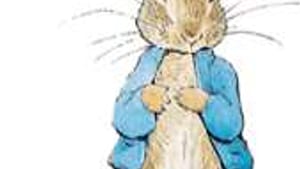Stay in the Loop
BSR publishes on a weekly schedule, with an email newsletter every Wednesday and Thursday morning. There’s no paywall, and subscribing is always free.
J.P. Morgan's Cabinet of Curiosities
Three shows at the Morgan in New York

For the best in drawing, the Morgan Library can rarely be matched. Three recent exhibits showcase the breadth and depth of this extraordinary collection and the Morgan's commitment to creative expression on paper.
The Morgan Library can always be counted on for a rollicking good time, if your taste runs to the quietly magnificent and extravagantly obscure. What was once J.P. Morgan's own private treasure chest has evolved into a unique repository of off-the-charts exquisiteness.
It's still housed in its original beaux-arts landmark mansion on 36th Street in New York (with a more or less successful 2006 addition by Renzo Piano)— a kind of Cabinet of Curiosities, but instead of dried bird bones and pinned butterfly wings it offers marvels in gold, precious stones, inestimably valuable scraps of paper and astonishing bits of leather, stone, ivory and metal.
Letters from Jane Austen
Medieval altarpieces, Renaissance paintings and ancient cylinder seals are alone worth the trip, but the core remains Morgan's first love: books and manuscripts, the wonder of the human hand on paper. Letters from Lincoln and Jane Austen, manuscripts of Paradise Lost and Dickens's A Christmas Carol, Tenniel's original illustrations for Alice in Wonderland, handwritten music by Brahms and Beethoven—these constitute just the tip of this formidable iceberg.
I used to live around the corner from the Morgan, years ago when there was no entry fee, no upscale restaurant and no impressive gift shop. Nobody really knew about the Morgan then, so it was a private bit of heaven. Fortunately, even with today's greater glamor, the Morgan remains one of the most dependable places to see drawing at its best.
When drawing was essential
I recently saw three exhibits in one day, each telling its own story about line, meaning, and image. The largest— "Dürer to de Kooning: 100 Master Drawings from Munich," a loan exhibition from the Staatliche Graphische Sammlung— was a works-on-paper blockbuster with the biggest of names across a wide chronology, including Michelangelo, Rembrandt, Durer, Beckmann and Kollwitz.
The Renaissance and Baroque works were concentrated in one gallery, Modern and Contemporary across a short hall in a second. This division made for a level historical playing field while the proximity allowed easy comparison of media, approach, and context.
The advantage in the earlier works, from a time when drawing was an essential, highly valued skill, was nicely balanced by the show of innovation and freedom by modern artists. My undying admiration for great draftsmen like Rembrandt and Parmigianino ramped up into a different kind of excitement when they were faced by the audacious gestures of Kirchner, Franz Marc and George Baselitz. I'll especially remember David Hockney's colored pencil study of a seated man, with a whimsical flip of bright red, a delicately drawn figure and an eloquent expanse of blank space.
Easy to focus
A much smaller exhibit, which I found interesting rather than truly significant, showcased the work of the Mannerist Rosso Fiorentino and his contemporaries. It included some beautiful studies, artist correspondence and an unfinished painting borrowed from the Walters Art Museum in Baltimore.
Because of the limited number of works and the installation in the tiny glassed-in gallery off the main hall, it was easy to focus clearly on small differences in quality and style, though all were from a narrow period of time.
Beatrix Potter's wrangles
The last of the three exhibits was by far the most charming. "Beatrix Potter: The Picture Letters"— a fascinating country stroll through the life and mind of the creator of Peter Rabbit and his sisters Flopsy, Mopsy and Cottontail— is told with the intimacy of words and pictures in letters to children. Finished illustrations form a good part of this show, as well as the history of business dealings with Potter's publishers and even wrangles with licensers of her famous characters.
But the heart is the letters, in which Potter expressed herself with the same free-flowing charm of her beloved stories. The hastily scribbled pencil and ink drawings of her pet squirrels, rabbits and other assorted wild creatures radiate enormous vitality and an organic, inevitable connection with her handwritten ramblings about life in the Lake District and other parts of England.
The Morgan's next show of great works on paper, "Drawing Surrealism," opens on January 25 and will remain on view through April 21, 2013.♦
To read another review of the Morgan exhibit by Robert Zaller, click here
The Morgan Library can always be counted on for a rollicking good time, if your taste runs to the quietly magnificent and extravagantly obscure. What was once J.P. Morgan's own private treasure chest has evolved into a unique repository of off-the-charts exquisiteness.
It's still housed in its original beaux-arts landmark mansion on 36th Street in New York (with a more or less successful 2006 addition by Renzo Piano)— a kind of Cabinet of Curiosities, but instead of dried bird bones and pinned butterfly wings it offers marvels in gold, precious stones, inestimably valuable scraps of paper and astonishing bits of leather, stone, ivory and metal.
Letters from Jane Austen
Medieval altarpieces, Renaissance paintings and ancient cylinder seals are alone worth the trip, but the core remains Morgan's first love: books and manuscripts, the wonder of the human hand on paper. Letters from Lincoln and Jane Austen, manuscripts of Paradise Lost and Dickens's A Christmas Carol, Tenniel's original illustrations for Alice in Wonderland, handwritten music by Brahms and Beethoven—these constitute just the tip of this formidable iceberg.
I used to live around the corner from the Morgan, years ago when there was no entry fee, no upscale restaurant and no impressive gift shop. Nobody really knew about the Morgan then, so it was a private bit of heaven. Fortunately, even with today's greater glamor, the Morgan remains one of the most dependable places to see drawing at its best.
When drawing was essential
I recently saw three exhibits in one day, each telling its own story about line, meaning, and image. The largest— "Dürer to de Kooning: 100 Master Drawings from Munich," a loan exhibition from the Staatliche Graphische Sammlung— was a works-on-paper blockbuster with the biggest of names across a wide chronology, including Michelangelo, Rembrandt, Durer, Beckmann and Kollwitz.
The Renaissance and Baroque works were concentrated in one gallery, Modern and Contemporary across a short hall in a second. This division made for a level historical playing field while the proximity allowed easy comparison of media, approach, and context.
The advantage in the earlier works, from a time when drawing was an essential, highly valued skill, was nicely balanced by the show of innovation and freedom by modern artists. My undying admiration for great draftsmen like Rembrandt and Parmigianino ramped up into a different kind of excitement when they were faced by the audacious gestures of Kirchner, Franz Marc and George Baselitz. I'll especially remember David Hockney's colored pencil study of a seated man, with a whimsical flip of bright red, a delicately drawn figure and an eloquent expanse of blank space.
Easy to focus
A much smaller exhibit, which I found interesting rather than truly significant, showcased the work of the Mannerist Rosso Fiorentino and his contemporaries. It included some beautiful studies, artist correspondence and an unfinished painting borrowed from the Walters Art Museum in Baltimore.
Because of the limited number of works and the installation in the tiny glassed-in gallery off the main hall, it was easy to focus clearly on small differences in quality and style, though all were from a narrow period of time.
Beatrix Potter's wrangles
The last of the three exhibits was by far the most charming. "Beatrix Potter: The Picture Letters"— a fascinating country stroll through the life and mind of the creator of Peter Rabbit and his sisters Flopsy, Mopsy and Cottontail— is told with the intimacy of words and pictures in letters to children. Finished illustrations form a good part of this show, as well as the history of business dealings with Potter's publishers and even wrangles with licensers of her famous characters.
But the heart is the letters, in which Potter expressed herself with the same free-flowing charm of her beloved stories. The hastily scribbled pencil and ink drawings of her pet squirrels, rabbits and other assorted wild creatures radiate enormous vitality and an organic, inevitable connection with her handwritten ramblings about life in the Lake District and other parts of England.
The Morgan's next show of great works on paper, "Drawing Surrealism," opens on January 25 and will remain on view through April 21, 2013.♦
To read another review of the Morgan exhibit by Robert Zaller, click here
What, When, Where
“Durer to de Kooning: 100 Master Drawings from Munich.†Closed January 6, 2013. “Beatrix Potter: The Picture Letters.†Through January 27, 2013. “Rosso Fiorentino.†Through February 3, 2013. All at Morgan Library and Museum, 29 East 36th St. (at Madison Ave), New York. (212) 685-0008 or www.themorgan.org.
Sign up for our newsletter
All of the week's new articles, all in one place. Sign up for the free weekly BSR newsletters, and don't miss a conversation.

 Marilyn MacGregor
Marilyn MacGregor